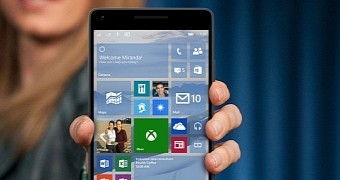Windows 10 will arrive this year on PCs, smartphones, tablets, and IoT devices, but it’s no secret that the first two categories are Microsoft’s key points of focus these days, especially because it needs to perform better to retain its dominant position and to become a stronger player in the industry, respectively.
The first to hit the market is the PC version, which will make its official debut on July 29, while the mobile sibling is projected to see daylight later this year, most likely in September or October.
But as far as the big Windows 10 picture is concerned, OEMs are rather reluctant that the mobile version would make such a big different in the smartphone industry for Microsoft, and many “have not placed much resources on related development,” according to a report from Digitimes citing its infamous “sources from the upstream supply chain.”
Instead, PC makers are hopeful that Windows 10 will succeed, especially because they are already seeing weak demand ahead of the debut of the new operating system, which is usually a sign that an important increase in shipments could be experienced just after the new software becomes available.
Microsoft betting big on 2-in-1s too
One particular business that Microsoft is betting on is the 2-in-1 industry, as the company has specifically tweaked the Windows 10 operating system to better address these devices.
The Continuum feature available in Windows 10 allows users to switch from the desktop to the tablet-based interface of the operating system when removing a keyboard, thus letting them continue their work without any interruption and switching from the traditional keyboard input mode to touch.
Microsoft is working on a similar feature for smartphones called Continuum for Phones, which would allow users to plug in their mobile devices into the USB port of their Windows 10 PCs and start working on their phones just like on a traditional desktop computer.
The feature was already demonstrated earlier this year and is set to arrive in Windows 10 Mobile in the fall of 2015, but new hardware will be required.

 14 DAY TRIAL //
14 DAY TRIAL //